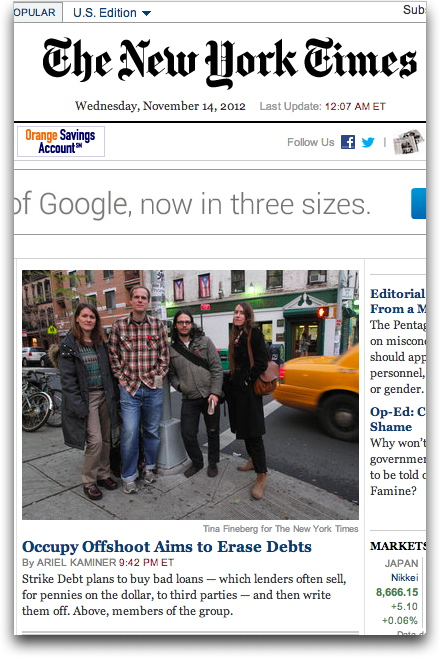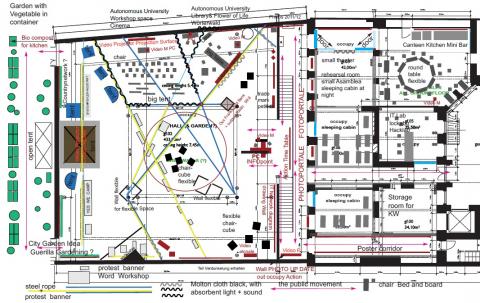It’s somehow December already and this project will not cross another change of month. After more than 325 posts, the end is in sight. So what’s next? Some ideas are in development and for others I thought I might ask you, the occupiers of 2012, what you think.
Already under construction is a web-based archive of the project using the Scalar multi-media software that I’ve mentioned a few times here. This will allow for better searching of the project and will have built-in “paths” tracking twenty keywords that have come up repeatedly, that allowing readers to track specific themes. And it will also serve as an archive of the project, whether for those in the movement, those interested in performative projects of this kind, or digital activists.
Perhaps that’s enough? But I’ve also had the thought of doing a book based on the two dominant ideas that have emerged during the course of the project. One of these is clearly debt and the emergence of the Strike Debt movement. Debt took me by surprise. I didn’t expect to be writing about it much in January. But once I did write about it, I noticed how people responded and that interest was part of the reason for my participation in Strike Debt.
The other area is all those issues now summarized by “climate”–climate change, food justice, primary extraction from mining to fracking, and the devastation of Hurricane Sandy. Here the process was reversed. I expected to develop ideas about climate, but at first found that there was not as much interest. Since the hurricane, that has dramatically changed. As occupiers will know, I’ve been interacting these themes as “climate/debt” and I would do so in any book.
I imagine a short book with a selection of key posts and some of the longer essays that I’ve written elsewhere during the course of the year on climate/debt, together with a general introduction. If there was any money that came my way, I would of course donate it to the movement.
Why a book? Because of the obvious impact that The Debt Resistors’ Operations Manual had as a book. The online archive will be there for everyone, always free. A book can go other places and attract different sorts of attention, perhaps create different forms of debate.
But there have been past controversies around books in the movement. I’d be curious to know what people think. Is this a good idea? Do you want to tweak what might go into the book and how?
Finally, what of the future? There’s going to be a movement in 2013. That wasn’t necessarily clear in January. I can’t possibly sustain another durational writing project. Should I carry on with occasional pieces in this format? Post in a different way? Or just stop altogether?
I would love to hear your thoughts by whatever means you feel comfortable with: please know that I am genuinely asking because, whatever else this project is, it was always for you, the occupiers, and the only opinion that counts to me is yours. With love.





